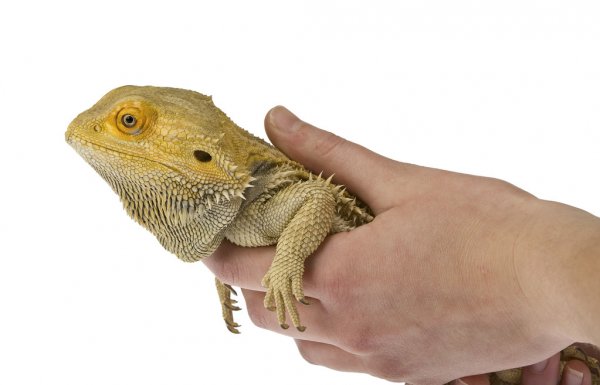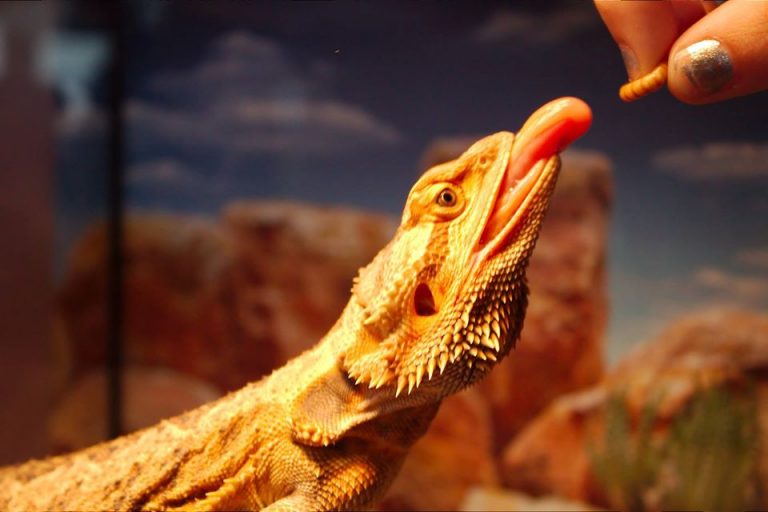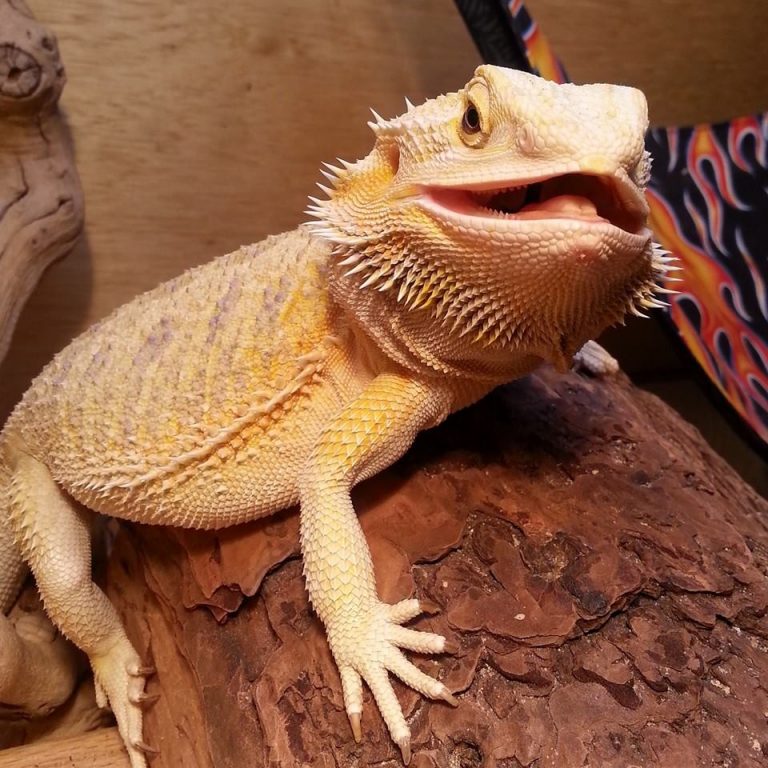Bearded dragons origin from the deserts of Australia and also are part Agamidae family of lizards. In recent years, they are becoming the more-popular pet reptiles in the Western and the Eastern, also. Therefore, there are so many owners want their beardies to mate and then produce offsprings instead of being alone for a whole life.
Breeding bearded dragons require so many precise techniques that will make beginners confused and worry. They are afraid of the risks of health problems or even fatal consequences for the dragons if they do something wrong.
So in this article, I will give some ultimate guides for beginners to decrease your fear and the dangerous rate when starting breeding the first time.
Internal Factors of A Bearded Dragon to Start Breeding
Before carrying out the breeding plan for any kind of animals, you have to understand exactly about their behavior and safe conditions to breed them, as well as bearded dragons. Here is several must-to-know information for you!
#1 Should you let male and female Breaded Dragons live together?
You should not keep these two types of sex to force reproduction and breeding. The reason is that this would cause her a lot of stress and even physical harm. Forcing a female to cohabitate is kind of cruel. Even if you place multiple males or females in the same spot, territorial disputes will happen, they will fight, beat upon, as a result, leading to injuries or deaths. If we cannot let them be together, what should we do to breed them? See the final part (9 steps) to find the answer.
#2 How old are a Bearded Dragon has to be to breed?
Ideally, the best way to start breeding for your bearded dragons is to wait until they age 18 months. This situation guarantees the healthy, strong and happy growth of a bearded dragon or in other words: their mature status with full development.
However, a male can breed once it from 16 months old and above. Females are fertile when the age is about 14 months old and will not be recommended to breed until they are fully developed (18 to 20 months old). If you choose to breed them sooner, this will absolutely slow down the remaining growth and cause harmful and fatal consequences because the calcium in their meal instead of normally going to her bones, it goes for eggs. You should wait, not force them to breed in a young body.

#3 How heavy are a Bearded Dragon ready to breed?
Female bearded dragons should weigh approximately 350 grams (from 10 ounces to 18 ounces) when they are enough 18 months old. If the over 500-gram weight will be considered obese. It’s important to find a veterinarian who can check up your bearded dragon annually and treat him for illness.
Meanwhile, male bearded dragons are usually capable of breeding when they weigh from around 250 to 300 grams. But in this case of males, the larger is better because he can hold his partners in place during the mating process.
#4 What about Bearded Dragon’s size at its maturity?
A male bearded dragon is probably full-grown and can start breeding when it reaches a snout to vent length of 18 to 24 inches. For a female bearded dragon, it can measure from 17 to 21 inches. These numbers are the ideal size for a bearded dragon, but if your beardie cannot reach, don’t be too worried because it depends on many factors such as the species of your pet reptile, for example, a type called Pogona Microlepidota only reaches from 4 to 6 inches.
External Factors of A Bearded Dragon for a Successful Breeding
#1 Environmental Requirements
Bearded dragons origin from the desert in Australia so a hot basking site will be really good for them. The basking temperature should be around 70 to 80 degrees F during the day. The night temperature will need to drop as low as 50 to 60 degrees F. Heat can be created by heat emitters, heat tape and other devices. The cage should be equipped with a thermometer to keep track of the right temperature.
Moreover, you should alter the photoperiod also so that bearded dragons can receive 10 hours of light and 14 hours of darkness. Those actions simulate a brief period of time (winter) that they encounter in nature in order to trigger behavioral breeding activity and induce spermatogenesis in males. During the rest of the year, you should do the opposite photoperiod to guarantee the normal breeding process.
Humidity levels for bearded dragons are as important as temperature and photoperiod factor. The suitable humidity level inside the tank needs to be maintained between 35% and 40% – as what is found in Australia’s desert (a reptile humidifier is necessary). When humidity is low, you can use a water spray bottle to mist your beardies several times a week but do not make it too wet, this will lead to some discomfort for them. In some cases, they might also need soaking in a tub of water, make sure to clean the tub and replace the water regularly.
#2 Food
High-quality food plays a vital role in guaranteeing the breeding process will succeed. It is not the time to save money at all. You should feed them fresh veggie and high-calcium food daily, while fruits sprinkled with a supplement is provided once a week. Remember to follow their precise feeding procedure and diet to avoid obesity.
For a female bearded dragon, after she has finished the mating process, 20 to 30% of her body weight will be lost so it is necessary to provide her with water, food and additional calcium to recover. Egg production also takes a lot of calcium, so if there is any shortage of calcium, it will probably lead to a crippling bone condition for a female beardie and the embryo bursting for the eggs, finally killing the offspring. Adding more Vitamin D/Calcium through sunbathing is also a good idea to increase the calcium level.

#3 Eggs
A female bearded dragon does not require a partner to start laying eggs. They lay eggs every 25 to 35 days. During this process, a tank is needed for them to place eggs with 4-inch down depth in moist soil. The average clutch size is between 16 to 24 eggs.
For the incubation process, the temperature impacts its behavior. The average temperature should be kept between 69 degrees F and 80 degrees F for the container and 80 degrees F to 90 degrees F for the eggs. If the temperature for eggs is above 90, it can quickly kill developing embryos. Most incubator periods take at least 6 to 12 weeks to make a good result.
About the last period – hatching, it could take from 65 to 90 days typically. Do not pull or force a baby beardie from its egg. After the initial opening of the egg, a healthy baby will make it out within 24 to 36 hours to adjust to our atmosphere, temperature and other things.
#4 Baby Care
After finishing the hatching process, you should place neonate bearded dragons in a misted shoebox that measures 14 inches in length, 9 inches in width and 6 inches in height with the paper towel for the substrate. Do not handle the newly born beardies with lights yet because it takes time for them to learn about its surroundings. Particularly, maintaining the ambient temperatures from 80 to 85 degrees F is a must-do thing. After 24 hours, you should change the larger box and separate each baby in order to make them grow faster and prevent territorial fights.
When the lizards are 2 or 3 days old, you should begin offering food for them with tiny crickets, finely chopped greens two or three times per day. If they are not interested in eating some kinds of food, you must remove and reintroduce the next day.
9 Precise Steps to Succeed Breeding Your Bearded Dragon
#1 Step 1: Meeting up with a breeder
When you do a very new job, it is started by getting some advices from someone who is professional in that field. So does the breeding work. A breeder will help you realize all the scenarios would happen and how to handle them well then finally having a good result.
What if your bearded dragon cannot mate with its partner, even they mate successfully, what if the eggs couldn’t hatch, is there any health problem can happen, prevent the bearded dragons from safe growth…. If you consider helps from a breeder, you will not panic like others who don’t have and don’t know how to make the right decision through the breeding procedure.
#2 Step 2: Learning about the lineages and genetic type of the Dragons you want to breed
As you want to breed your dog or any kind of reptiles/animals, the first thought comes to your mind would be what feature you like from others such as body-color, sizes, … then you want to have it for your baby beardies. It will determine what lineages and genetic types of reptiles to breed – in this case are the decision on the type of bearded dragons.
Well, you must do some research from websites or consultors on the genetic makeup of each beardie. Some certain morphs don’t mesh well with each other and lead to a higher risk of weak hatchlings and even fatal results. Be careful!
#3 Step 3: Taking your Bearded Dragons to the vet
Making an appointment with a veterinary clinic that you trust to do some health test for the bearded dragons you want to breed. This ensures they have enough good conditions to start mating. The vet will weigh, measure them and conduct the proper testing to know whether your pet reptiles carry any virus or not and many other results.
#4 Step 4: Preparing your female Bearded Dragon with the right supplements
In order to help your female lay the healthiest clatch, you should feed her on a diet that supplies both calcium and Vitamin D. You need to give her these supplements before any breeding on at least 2 weeks because she can get calcium deficient after laying the eggs and to help her eggs have plenty of calcium.

#5 Step 5: Preparing a separate breeding tank
As I’ve said above, you should not let your bearded dragons live together to force them to reproduce, what you should do is to consider preparing a separate breeding tank and putting together a new habitat for your male and female beardies to breed in. This is for the purpose of avoiding aggression from territorial problems and decrease the stress level of them. The tank size needs to be adequate for both and measures between 75 to 120 gallons. Rocks and branches are recommended to make the most natural habitat for them.
#6 Step 6: Allowing your Bearded Dragon to mate
After feeding your female beardie high calcium and Vitamin D meal for at least two weeks, the next thing to do is place her with her partner in the tank with new habitat to start mating. You must play a supervisor to ensure there is no fight break out. If they get along and show no signs of aggression, you can let them live together for a longer time, but in the same presentation to supervise.
#7 Step 7. Provide a lay box once your female is pregnant
When your female is pregnant, providing her with a box to lay her eggs is very necessary. This box should have at least an 8-gallon container and contain at minimum 6 inches of damp soil/sand to bury the eggs.
#8 Step 8: Purchase an incubator
Incubation is such an important process that can determine much about the baby bearded dragons’ behaviors. An incubator is an equipment used for creating the perfect conditions for the eggs to incubate and hatch successfully. It is designed to regulate incubation temperature and humidity at perfect levels.
#9 Step 9: Set up your baby bins/care for your new hatchlings
When the baby bearded dragons are newly born, you should immediately divide them into different bins to help them grow in the best condition, reduce the risks of tails or limbs being nipped at as well. Each bin needs to be set up as familiar as the adult’s tank.
Conclusion
Breeding for one kind of reptiles or animals firstly seems to be simple and easy, but if you do research deep enough, you can find it is not simple and easy at all, it requires many techniques, experiences and knowledge to reach the final result.
However, I hope, after reading my words carefully and then taking your notes, even you are a beginner or not, the breeding process of your bearded dragons will get more chances to succeed no matter what.
Thank you for reading!